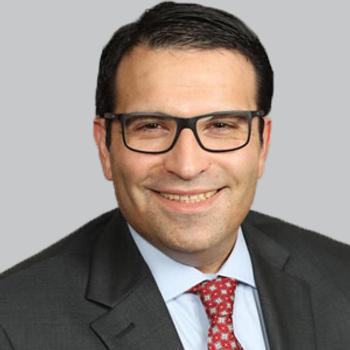
Understanding Drug Interactions, Treg Dysfunction in ALS: Stanley Appel, MD
The director of the Ann Kimball & John W. Johnson Center for Cellular Therapeutics at Houston Methodist provided insight on previously approved therapies for ALS, and whether they can work synergistically with agents that enhance regulatory T cells function. [WATCH TIME: 5 minutes]
WATCH TIME: 5 minutes
"We’re decreasing the inflammatory pathway in the cell that is making the T-reg dysfunctional. If you enhance the T-regs with IL-2 injection, rather than by growing out the cells, and you use it in combination with something that’s suppressing the activated myeloid cells, macrophages, etc., that combination we believe is meaningful"
Neuroinflammation is a pathological hallmark of amyotrophic lateral sclerosis (ALS) in both transgenic rodent models and patients, and is characterized by proinflammatory T lymphocytes (Tregs) and activated macrophages/microglia. In a phase 2a clinical trial (NCT04055623), COYA 101, a first-in-class Treg cell therapy product developed by Coya Therapeutics, was found to be safe and showed signs of potentially slowing disease progression in patients with ALS. Published in Neurology, Neuroimmunology, & Neuroinflammation in late 2022, the study randomly assigned 7 patients 1:1 to Treg infusions (1 x 106 cells/kg) intravenously every 4 weeks and interleukin-2 (2 x 105 IU/m2) injections 3 times/week or matching placebo for 24 weeks, with an additional 24-week open-label extension (OLE) that followed.
During the OLE 6 of 8 participants showed slow to no progression, while the other 2 rapid progressors had elevated markers of oxidative stress and inflammation, which the authors noted may help delineate responsiveness to therapy. Even with the recent approval of Amylyx’s AMX0035 (Relyvrio), researchers in the field are trying to find ways to expand the treatment toolbox and combat the all-encompassing disease that is ALS. Many feel as though it will take a combination approach to treat the disease, mainly by a synergistic effect from multiple therapeutic approaches.
To learn whether a Treg approach would work best in combination with other previously approved therapies, NeurologyLive® sat down with Stanley H. Appel, MD, chair of Coya’s Scientific Advisory Board. Appel, Peggy and Gary Edwards Distinguished Chair in ALS research, co-director of the Houston Methodist Neurological Institute, Chair of the Stanley H. Appel Department of Neurology, Houston Methodist Hospital, and professor of neurology at Weill Cornell Medical College, provided insight on the differences in each medication, and the role of Treg dysfunction in ALS research.
REFERENCE
1. Thonhoff JR, Berry JD, Macklin EA, et al. Combined regulatory T-lymphocyte and IL-2 treatment is safe, tolerable, and biologically active for 1 year in persons with amyotrophic lateral sclerosis. Neurol Neuroimmunol Neuroinflamm. 2022;9(6):e20019. doi:10.1212/NXI.0000000200019.
Newsletter
Keep your finger on the pulse of neurology—subscribe to NeurologyLive for expert interviews, new data, and breakthrough treatment updates.


































